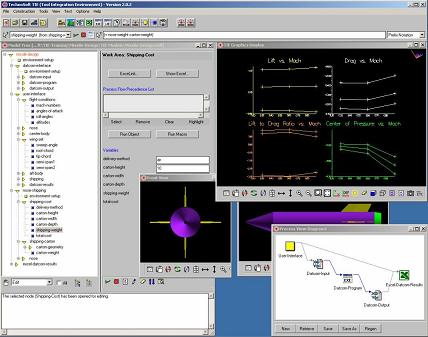AML is an object-oriented, knowledge-based engineering modeling framework. AML enables multidisciplinary modeling and tool integration environment of the entire product and process development cycle. No other commercial framework or development environment provides the full range of capabilities that AML includes out of the box.
In the design and analysis phases, geometry is often the center of a product’s definition. AML provides a geometry-centric environment with support for both manifold and non-manifold solid, surface, and wireframe modeling capabilities.
Computation in AML is innately demand-driven, utilizing automatic dependency tracking between objects and properties to compute only that which is required. As a result, AML makes the most of the computing resources that are available.

Built on proven AML technology, TIE enables engineers to integrate their tools, automate their processes, perform multidisciplinary trade studies and optimization, and ultimately design better products, faster.
Complementary TechnoSoft Products
TechnoSoft’s AMOpt » can be used within TIE to perform optimization, probabilistic design, and various trade studies. AMOpt provides a wide variety of methods, including gradient-based optimization, a genetic algorithm, design of experiments, Monte Carlo simulation, and response surface methodology, all within an easy to use graphical environment, consistent with TIE.
Knowledge-based geometry models built in TechnoSoft’s AMSKetcher » can also be used with TIE. This enables engineers to integrate fully parametric solid, surface, and wireframe geometry with other multidisciplinary design and analysis tools.
Multiple TIE (or AML) models residing on distributed, disparate computing platforms can easily be linked together using TechnoSoft’s Distributed Modeling Manager (DMM »).
TIE also provides a convenient environment for deploying powerful AML » objects. AML developers can create generative interfaces to complex tools, and TIE users can easily link them into a TIE model in a plug-and-play fashion. For example, the parameters of an interface to Nastran can be linked within TIE to an Excel© based cost model, a file-based FORTRAN code, and a Pro/ENGINEER© CAD model, and then driven using a DLL-based optimization code.

